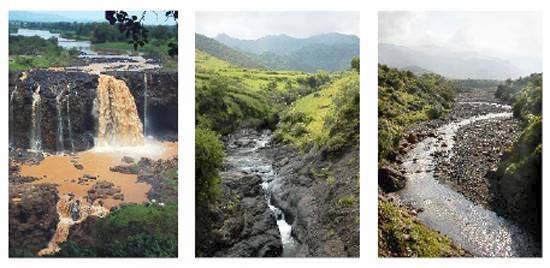
Alison Jones has photographed cultures, wildlife, ecosystems and development for over twenty years. She has focused on threats and solutions to Africa and North America’s fresh water – a resource that is vital to human health and biodiversity conservation. In her long-term nonprofit project, No Water No Life, she has been photographing issues raised by hydrologists, biologists, ecologists, and other scientists to bring attention to the precarious condition and limited availability of clean fresh water. Her work also documents solutions for sustainable stewardship that could be applied on a global basis.
Working with Dr. Robin Sears, Research Scientist at Columbia University, and Robin MacEwan, Resource Manager and Restoration Ecologist, Alison traveled through and used watersheds* as the unit by which to analyze availability, quality and usage of fresh water. Her source-to-sea expeditions start at rivers’ headlands of glaciers, springs and tarns and end at their estuaries and deltas. She has explored watersheds’ ecosystems, biodiversity, people and activities that depend on water. The project illustrates individual, community, national and trans-boundary demands for clean, fresh water.
Threats to these critical watersheds are creating severe consequences for human populations and biodiversity. Watersheds in Africa and North America were chosen for this project to provide a broad, comparative picture of freshwater sources. The No Water No Life team is investigating conservation strategies for highland sources, wetlands, uplands, lakes, riverine corridors and estuaries.
North American watersheds studied include those of the Columbia, Mississippi and Raritan Rivers. Known for its salmon migration, the Columbia River Basin covers an area larger than France and is the most hydro-electrically developed in the world. The Mississippi bisects the continent carrying sediment and pollution in channels narrowed by flood-controlling levees. New Jersey’s Raritan watershed, supplying fresh water to urban communities in the nation’s most densely populated state, struggles with industrial pollution and over-paved surfaces that exacerbate flooding.
1. Oldwick, NJ: Aerial view of countryside at sunrise from a hot-air balloon, August.
2. Califon, NJ: Lockwood Gorge, South Branch of Raritan River, January.
3. Clinton, NJ: South Branch of Raritan River, old stone mill (now Hunterdon Arts Center), October.
In Africa, Alison has been documenting rivers as “ribbons of life” in more than a dozen countries on 70 different trips in the last three decades. For No Water No Life she has photographed issues in the Omo, Blue Nile and Mara River Basins. The Omo, running from Ethiopia to Kenya and home to some of Africa’s most undisturbed indigenous cultures, is losing its riverine forest to agriculture and thus increasing extreme floods are displacing whole communities. The Blue Nile, emanating from Ethiopian Highlands, provides 86% of the water volume to the Nile; yet by treaty its usage is completely governed by Egypt, causing dangerous trans-boundary strife in the Horn of Africa today. The Mara River, flowing into the lowered waters of Lake Victoria, is the water resource and terminus of the famed migration of 2 million wildebeest and zebra, but is facing extremely low volume due to climate change and deforestation in its Mau Forest headlands.
Outputs of this long-term project include books for adults and children, magazine articles, lectures, exhibits, interactive website postings, and student curriculums to be created on fresh water issues. As well, No Water No Life fosters partnerships of watershed communities, both upstream and downstream and across continents.
For more information, see the No Water No Life website at nowater-nolife.org.
* Watersheds are the land area that drains water to a particular stream, river, or lake. This term is interchangeable with “basin.”
The fiscal sponsor offering No Water No Life donors 501c3 nonprofit status is the International League of Conservation Photographers/iLCP, of which Alison Jones is a Senior Fellow. Tax-deductible checks may be written to “iLCP/NWNL” and mailed to: The International League of Conservation Photographers /4600 North Fairfax Drive, 7th Floor / Arlington, VA 22203.
|